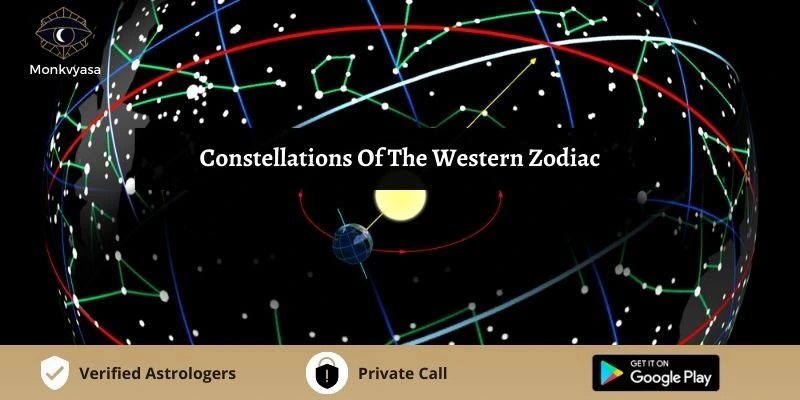

Constellations are fascinating to investigate (despite the fact that astrology is not a science).
The night sky’s constellations are linked to myth and legend, as well as the unscientific concepts of astrology. However, they have also been important and useful to science and exploration throughout history and continue to be so today.
The universe’s stars are dispersed across a vast three-dimensional space. When we look up from the surface of our planet, we see constellations: two-dimensional pictures and shapes that connect the stars in the sky to stories from cultures all over the world.
Aside from their cultural significance, constellations were once important instruments that marked the passage of time and seasons. Constellations are still useful tools for orienting astronomers and stargazers in the night sky today.
The western zodiac is made up of 12 constellations: Aries, Taurus, Gemini, Cancer, Leo, Virgo, Libra, Scorpio, Sagittarius, Capricorn, Aquarius, and Pisces.
Astrologers use 12 of these constellations to make predictions that roughly correspond with the zodiac signs. (The 13th sign, Ophiuchus, was omitted because the stars were not in exactly the same position when the signs were first described.)
Today’s astrological signs are distinct from these constellations, with only a passing reference to one another. The rising of the constellation Aquarius, for example, corresponds to the sign of Pisces.
Stars appear to move across the sky on a regular basis from Earth. The appearance of star movement is due to the rotation of Earth rather than the movements of stars themselves.
Similarly to how our sun appears to move across the sky when it is actually our planet rotating as it orbits the sun, constellations appear to move across the sky when that movement is actually due to our changing viewpoint.
Despite the fact that we are looking at stars across vast expanses of three-dimensional space, the arrangement we see appears to be two-dimensional. However, stars that appear to be next to each other in a constellation may be hundreds of light-years apart.
For example, the nearest star to us in the well-known constellation Orion is Bellatrix, which is about 200 light-years away. However, the most distant star in that constellation is Alnilam, which is approximately 1,300 light-years away. However, from our perspective on Earth, they appear to be nearby neighbours.
Also Read: Crystals For Your Zodiac Signs.
However, Orion is not a zodiac constellation. These constellations are mostly defined by their position on the ecliptic, an imaginary or projected line in the sky that marks the perceived path of the sun (along with the rough paths of the planets and the moon, which are all on the same plane) over the course of a year on Earth.
Since 1929, the ecliptic has passed through 13 of the 88 constellations officially recognised by the International Astronomical Union. The western zodiac is made up of only 12 of those constellations.
The majority of the constellations visible in the Northern Hemisphere’s skies have Greek or Roman names. According to Encyclopedia Britannica, this is due in part to the Almagest, an influential catalog of stars and constellations created in the second century by the ancient mathematician Claudius Ptolemy.
However, long before these names became popular, people were mapping the sky. For example, ancient China, Sumeria in the Middle East, and Egypt all had their own star maps. Many of the Greek constellations that we now consider to be the Western zodiac were adopted from Babylonian astronomers, according to a 2017 paper published in the journal of the American Philosophical Society. They called the constellations we (and the ancient Greeks) know as Gemini, Leo, and Cancer “The Twins,” “The Lion,” and “The Crab” thousands of years ago.
Astrology was once considered a branch of astronomy. According to Time magazine, the famous astronomer Johannes Kepler was considered an astrologer during his lifetime in the 1600s.
Researchers continue to use the IAU’s 88 constellations, which include all 12 zodiac constellations. Astronomers can use those markers to explain what parts of the sky are part of their work or to orient themselves in order to find objects in space that they have seen.
The Morehead Planetarium also suggests using constellations as a guide to find fast-moving planets. The zodiac constellations are easily recognised by casual skywatchers because they are associated with a story and a shape. When a planet appears as a bright object in a constellation, observers can notice that one of the “stars” is out of place and could instead be Mars, Jupiter, or Venus.
According to NASA’s Space Place, astronauts are still learning star navigation. It’s not a replacement for computerized navigation systems, but it’s a good one: For thousands of years, seafarers and explorers used stars and constellations to navigate. According to NASA’s Space Place, astronauts are still learning star navigation. It’s not a replacement for computerized navigation systems, but it’s a good one: For thousands of years, seafarers and explorers used stars and constellations to navigate.
Throughout history, humans have used the stars to help them time harvests and plantings, but they have also used constellations to tell stories and find meaning.
Planetariums and skywatching programmes now retell those stories to pique people’s interest, pique their curiosity, and keep the ancient history of space exploration alive. For more Western zodiac consult our certified Astrologers.
Follow us on Instagram and Youtube for more Astrological videos.